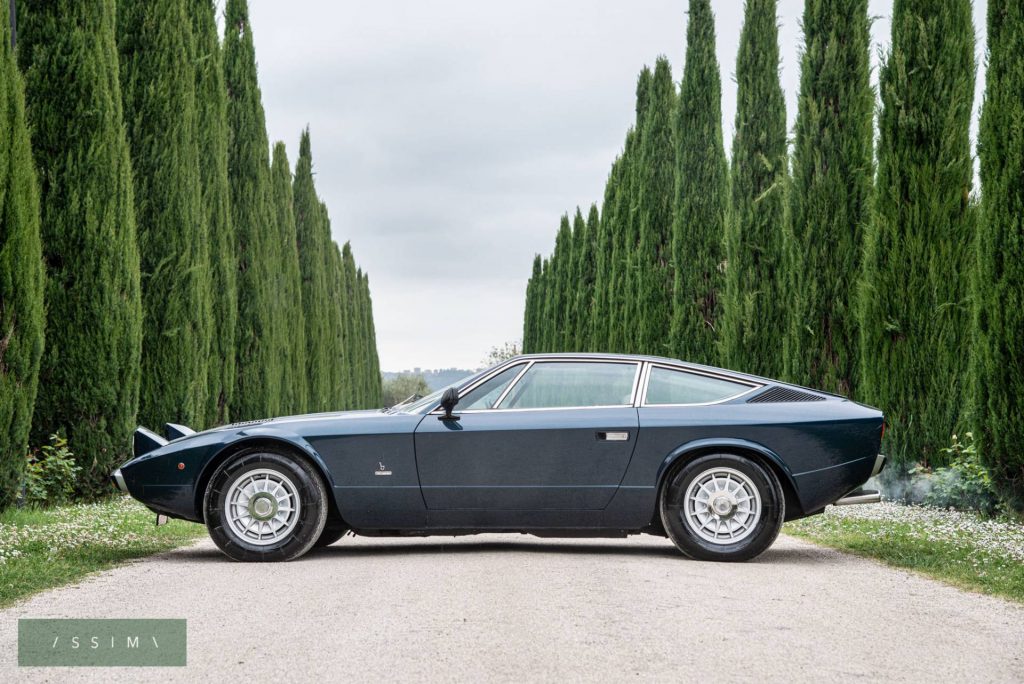When Citroën took over Maserati in 1968, plans for the launch of the Indy (a high-performance tourer car that featured a V8 engine, four seats, and rear-wheel drive) were so far advanced that Citroen rightly decided to leave ‘well alone’. There were 1,104 Maserati Indy’s produced during the six-year manufacturing run.
Subsequent models like the Bora and the Merak ‘benefitted’ from Citroën’s influence, who steered Maserati’s production away from front-engined GTs to mid/rear-engined sports cars. Leaving many Maserati customers unhappy at the lack of a luxury GT in the Maserati range, the House of Bertone was given the task to design and build a new Granturismo.
The result was the splendid Khamsin, designated Tipo 120 by the factory, a car designed by one of Bertone’s more talented young designers, Marcello Gandini.
The Khamsin was built on a tubular chassis with the same 2550 mm wheelbase as the Ghibli, and its engine mounted behind the front axle gave the car excellent road handling.
The Maserati Khamsin was perhaps the pinnacle of the Marque’s traditional classic front-engine, rear-wheel-drive GT’s. It was Giulio Alfieri’s who was responsible for production and racing car development last creation, where he was able to develop it without any restrictions from Citroen.
Powered by the magnificent AM115 4.9 litre V8 of the Ghibli SS, the Khamsin is perhaps the true last classic GT ever made by Maserati. As usual with Maserati, the Khamsin was named after a wind (meaning 50 in Arabic), a dry and hot wind that blows for 50 days in the desert. The Khamsin stayed in production for ten years between 1973 and 1983, approximately 430 built.
Considered by many, the Khamsin was ‘The most beautiful GT ever built by the Maserati.’ Seductive yet aggressive, the Khamsin represents the last cry of a romantic era where cars were built for pleasure and not for marketing reasons.’

